Related Research Articles
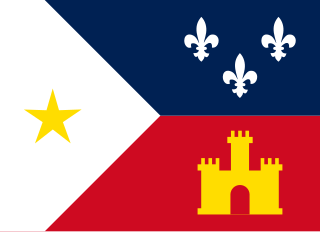
The Cajuns, also known as Acadians, are an ethnic group mainly living in the U.S. state of Louisiana. They also live in the Canadian maritimes provinces consisting in part of the descendants of the original Acadian exiles—French-speakers from Acadia (L'Acadie) in what are now the Maritimes of Eastern Canada. In Louisiana, Acadian and Cajun are often used as broad cultural terms without reference to actual descent from the deported Acadians. Historically, Louisianians of Acadian descent were also considered to be Louisiana Creoles, although Cajun and Creole are often portrayed as separate identities today. Most Cajuns are of French descent. The Cajuns make up a significant portion of south Louisiana's population and have had an enormous impact on the state's culture.

Gordon Roger Alexander Buchanan Parks was an American photographer, musician, writer and film director, who became prominent in U.S. documentary photojournalism in the 1940s through 1970s—particularly in issues of civil rights, poverty and African-Americans—and in glamour photography.
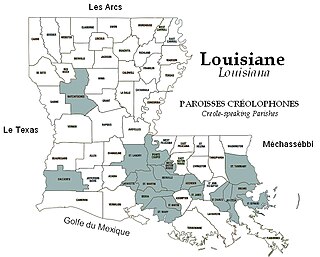
Louisiana Creole is a French-based creole language spoken by fewer than 10,000 people, mostly in the state of Louisiana. It is spoken today by people who racially identify as white, black, mixed, and Native American, as well as Cajun and Louisiana Creole. It should not be confused with its sister language, Louisiana French, a dialect of the French language.
Richard Billingham is an English photographer and artist, film maker and art teacher. His work has mostly concerned his family, the place he grew up in the West Midlands, but also landscapes elsewhere.

Louisiana or French Louisiana was an administrative district of New France. Under French control from 1682 to 1769 and 1801 (nominally) to 1803, the area was named in honor of King Louis XIV, by French explorer René-Robert Cavelier, Sieur de la Salle. It originally covered an expansive territory that included most of the drainage basin of the Mississippi River and stretched from the Great Lakes to the Gulf of Mexico and from the Appalachian Mountains to the Rocky Mountains.

Louisiana Creoles are people descended from the inhabitants of colonial Louisiana before it became a part of the U.S. during the period of both French and Spanish rule. As an ethnic group, their ancestry is mainly of African, French, Spanish and Native American origin. German, Irish, and Italian immigrants also married into these groups. Louisiana Creoles share cultural ties such as the traditional use of the French, Spanish, and Louisiana Creole languages and predominant practice of Catholicism.

Ralph Zachary Richard is an American singer-songwriter and poet. His music is a combination of Cajun and Zydeco musical styles.

Lauren Greenfield is an American artist, documentary photographer, and documentary filmmaker. She has published four photographic monographs, directed four documentary features, produced four traveling exhibitions, and published in magazines throughout the world.
Elemore Morgan Jr. was an American painter, photographer, and educator. He was recognized in the Southern United States as a leading contemporary landscape artist. He was a professor of art at University of Louisiana at Lafayette, from 1965 until 1998. His paintings of rice farms in Vermilion Parish have been widely exhibited, from Paris to Los Angeles.
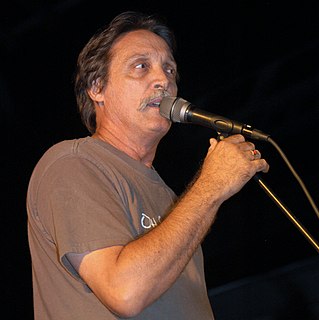
Barry Jean Ancelet is a Cajun folklorist in Louisiana French and ethnomusicologist in Cajun music. He has written several books, and under his pseudonym Jean Arceneaux, including poetry and lyrics to songs.
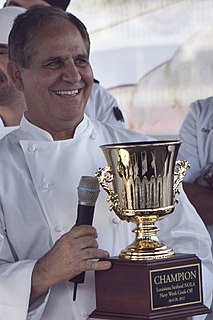
John Folse is a Louisiana chef, restaurant owner, and television host, and a leading authority on Cajun and Creole cuisine and culture.
Carl Anthony Brasseaux is an American historian and educator. He specialized in French Colonial North America, particularly of Louisiana and the Cajun people. He helped to pioneer the field of Cajun history, and his published works on this topic represent the first serious, in-depth examination of the history of the ethnic group.

Glenn Russell Conrad was an American historian, professor, and author. He is known for his research of south Louisiana culture, as well as an expert on archival studies, nineteenth-century European history, and the history of colonial Louisiana. He taught at Southern Colorado State and the University of Southwestern Louisiana from 1958 until 1991, and serving as the director of the Center of Louisiana Studies at University of Southern Louisiana from 1973 until 1993.
Richard Guidry was a Cajun cultural activist and educator who worked to save the French language in Louisiana.

Theodore Fonville Winans was an American photographer whose black-and-white images documented south Louisiana people and places. He established a successful practice as a wedding and portrait photographer, but is best known for his images of south Louisiana's rugged outdoors, and its fishermen and swamp dwellers.

Louisiana French is an umbrella term for the dialects and varieties of the French language spoken traditionally in colonial Lower Louisiana. As of today Louisiana French is primarily used in the U.S. state of Louisiana, specifically in the southern parishes.

Brian Duffy was an English photographer and film producer, best remembered for his fashion and portrait photography of the 1960s and 1970s.
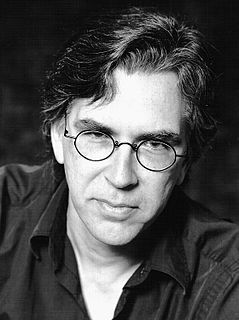
Peter Josyph is a New York artist who works concurrently as an author, a painter, an actor-director, a filmmaker, and a photographer.

Richard Sexton is a fine art and media photographer, author, teacher, and critic of the urban built environment with a studio based in New Orleans, Louisiana. He is best known for his architectural photography publications and exhibitions, which have been shown internationally. Sexton was born in 1954 in Atlanta, GA, and currently resides in both New Orleans, Louisiana, and Walton County, Florida.
Charles H. Traub is an American photographer and educator, known for his ironic real world witness color photography. He was chair of the photography department at Columbia College Chicago, where he established its Museum of Contemporary Photography (MOCP) in 1976, and became a director of New York's Light Gallery in 1977. Traub founded the MFA program in Photography, Video, and Related Media at the School of Visual Arts in New York City in 1987, which was the first program of its kind to fully embrace digital photographic practice. He has been Chairperson of the program since. Traub has published many books of his photographs and writings on photography and media.
References
- ↑ "Turner G. Browne". Know LA. Retrieved August 4, 2013.